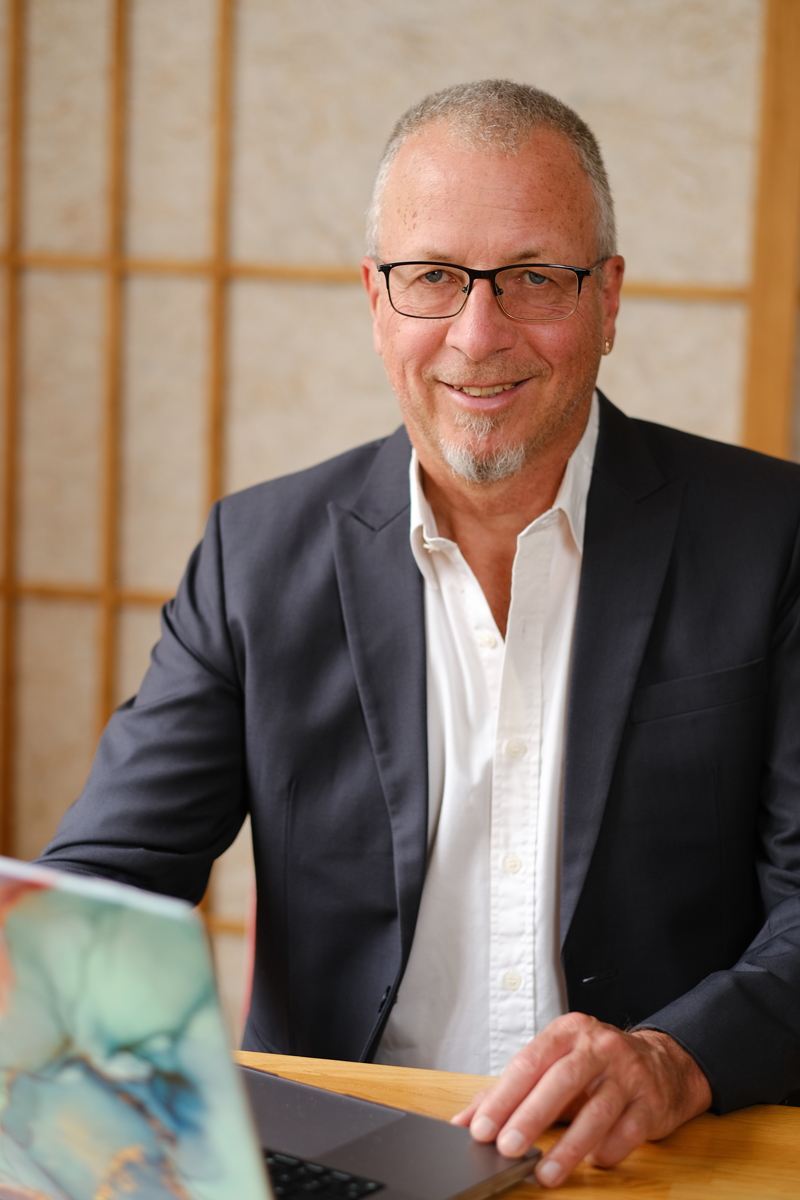My attitude
Walter Hermann, what are the essentials of your work as a psychotherapist?
It is important to me that the therapy is a joint process in which the goals come from the client.
"Goals" are an important keyword. Many people who come to me have a very clear idea of what their problem is. When I ask them about their goals, they are often speechless at first. Many people don't know what they want. So the first step is to find out - and that's where I help my clients. We then embark on a journey together, in which I am the expert for the process, so to speak. However, the clients themselves are always the experts when it comes to their own goals - because only they can know what is good for them.
I experience this journey together as an immersion in a foreign universe. I consciously allow myself to be touched, to allow myself to feel the suffering, pain and distress of my clients. My heart has to resonate and I have to "leave myself behind" a little so that I can pick up the other person exactly where they are. At the same time, I work at the level of the mind with various methods in order to structure, clarify systemic connections and move towards a solution.
In other words, therapy is not about analyzing problems or finding out their causes?
That's right - we always work in a systemic and solution-oriented way in therapy. This means that we do not investigate problems and their causes, but instead establish solutions as a goal and find a common path to get there.
Working with children and adolescents is a focal point of her psychotherapeutic practice. Why are these clients particularly close to your heart?
After returning from various assignments abroad, I took over the management of a child protection center near Vienna. In this position, I realized that I enjoy this work and that I have the feeling that I am doing something very meaningful.
Children are our future. What you "fix" for them no longer appears as a problem later on. At the same time, however, children are also the weakest members of society. They deserve special protection, support and encouragement.

Some people are disappointed when I don't give them a clear answer to the question "What should I do?". But that's not my job. My job is to help people find their own answers.
The foundation of her therapeutic work is the systemic approach according to Virginia Satir. Can you explain this approach in more detail?
We humans are relational creatures. We cannot live without relationships. We are constantly in relationship with other people, even with those who have already passed away. If one element in this network of relationships changes, the entire system changes. We can assume that we are connected to the entire universe at every moment - even if it doesn't always feel that way.
Certain methods are needed to ensure that the changes to the system are sustainable and beneficial for everyone involved. These are used in the psychotherapeutic process.
This systemic approach also comes into play in your constellation work.
In constellation work, we become aware of our unconscious ideas about the world by projecting them outwards, whether on the system board, in an individual constellation or in a group. This gives us access to these ideas and enables us to change the system respectfully and sustainably through deliberate interventions.
It is difficult to describe exactly what happens - you have to experience it. It's as if we normally go through life like sleepwalkers and suddenly we wake up and can consciously change things. We are working to raise awareness on a structural level that is otherwise inaccessible to us.
Working with dreams is also part of your work. How can we use our nocturnal dreams to find out more about ourselves and shape our lives more consciously?
Essentially, you can learn to remember your dreams better. The next step is to learn to listen attentively and intently to what they have to say. You have to "walk around" a dream, look at it from different perspectives. In this process, some things become clearer - not in the sense of an explicit answer, but in the sense of a perceptive understanding.
But there are also dreams that give us unmistakable instructions, such as "Look there!" or "Don't touch that!" Sometimes our self also speaks to us clearly and distinctly - like a voice from offstage.
They also use methods from neuro-linguistic programming (NLP) and emphasize the reality-creating aspect of language. What exactly does this mean?
Naming and formulation make things more present, more real. This is how truths and content arise in our consciousness. I encourage my clients to name their resources and solutions and thereby give them shape and reality.
Each of us has a constant commentator in our heads. If you become aware of this, you can create new habits and bring other aspects to the fore. Many people don't even know what they are capable of because they are constantly staring at their shortcomings. We can reprogram the commentator, so to speak - away from the problem and deficit and towards the solutions and resources.
You were born in Vorarlberg and live and work in Vienna. Her life has also taken her to many distant countries, not only as a traveler, but also on humanitarian missions in crisis areas. Why are you drawn to faraway places - and how have your travels shaped you and your work?
We learn through differences, they are the basis of all perception. When I leave my familiar surroundings, I notice differences on the outside and within myself. That is why it is so aptly said: traveling educates.
At some point, traveling as a tourist wasn't enough for me. Even as a backpacker, you always remain an "other" and can't really meet the local people. That was my motivation for my humanitarian missions: I wanted to be with people in other cultures, to share their lives with them.
But traveling is also an adventure, fulfills my curiosity and meets my need to move. Movement is the opposite of being “stuck”. Traveling allows me to experience and reinvent myself again and again, while at the same time discovering what remains the same.
